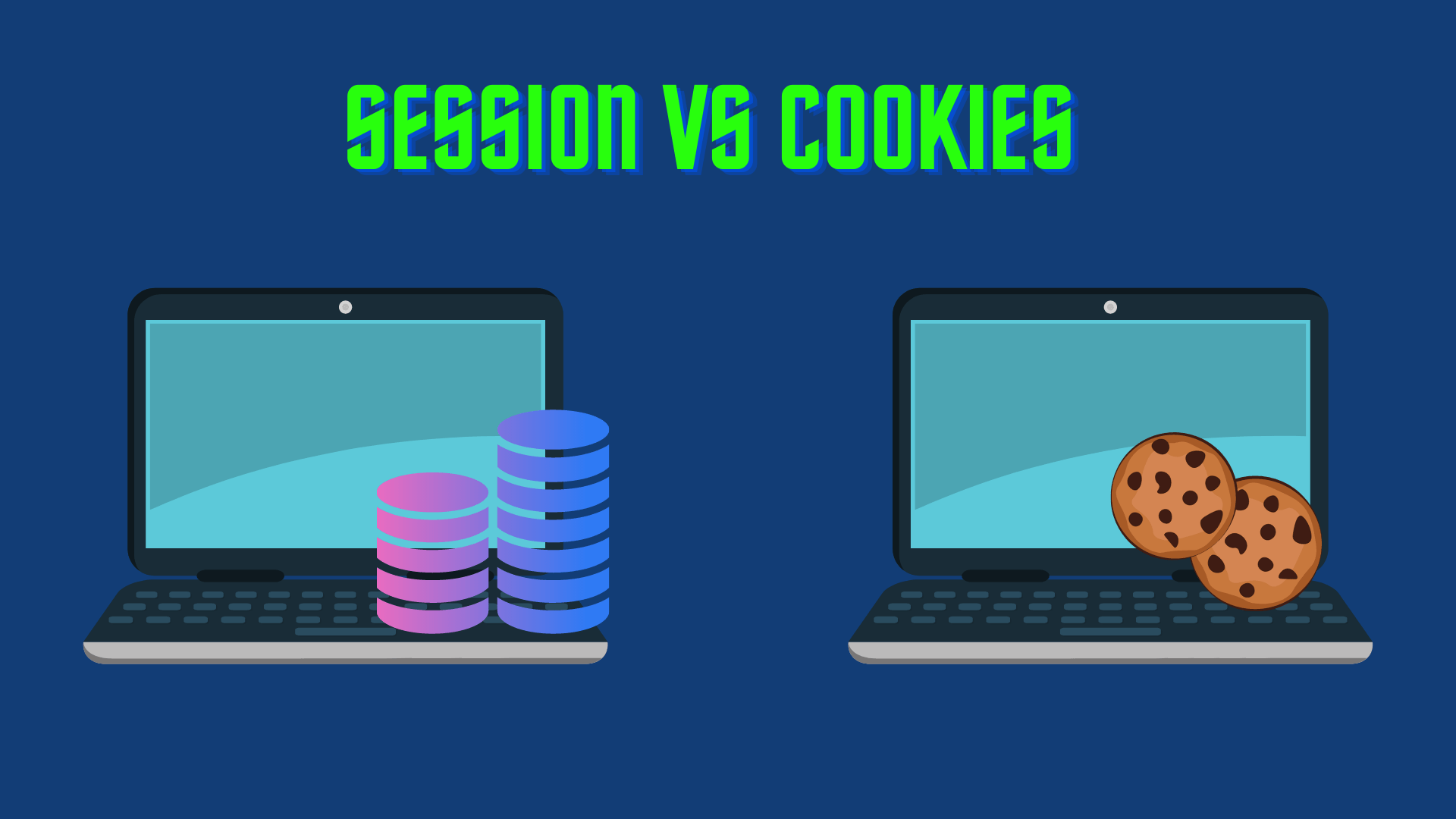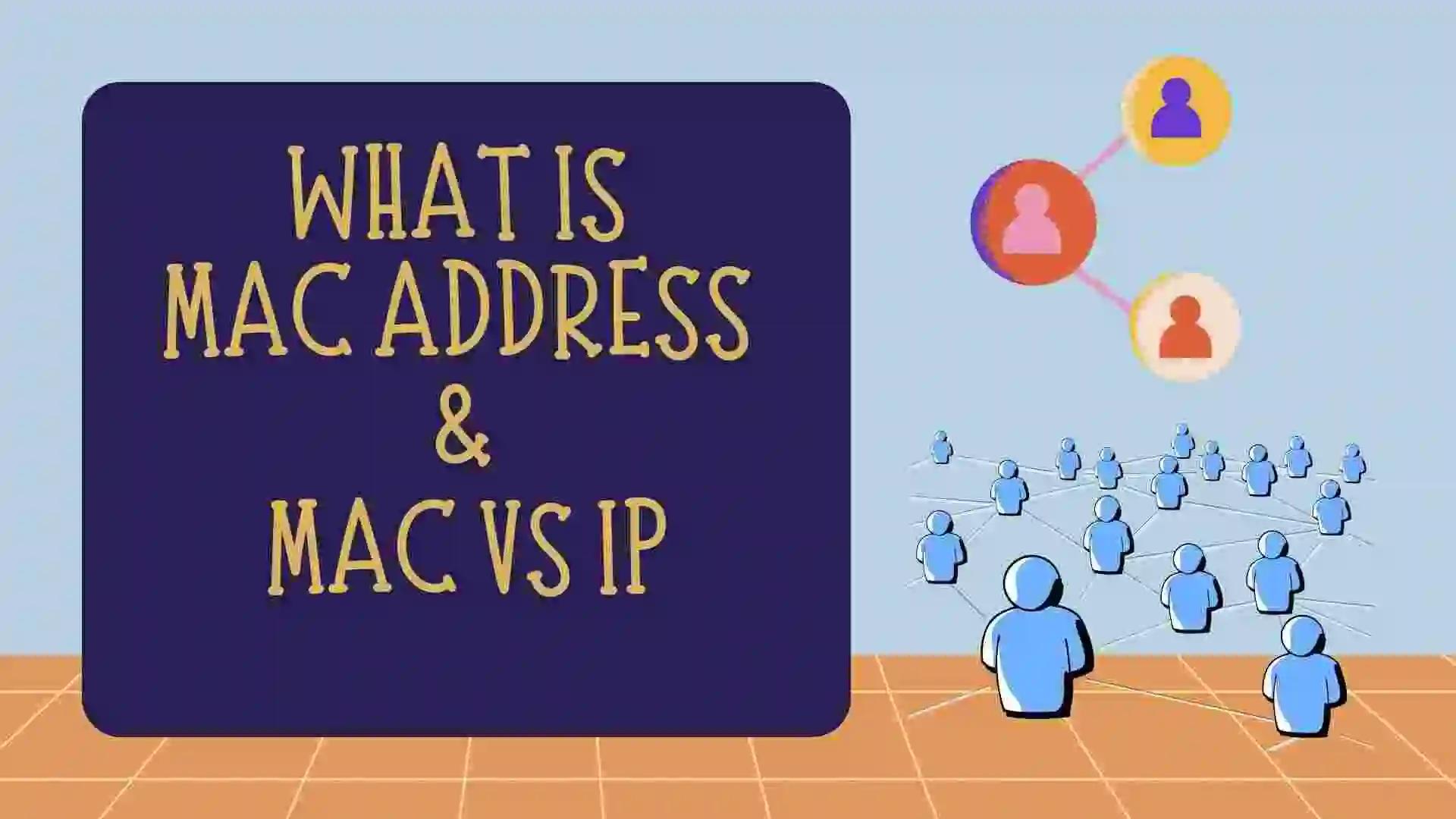In this blog, we will see the concept of sessions and cookies. Why do we use them, and what is the difference between them? and many such questions will be answered in this blog. So let’s get started with the blog.
Table of Contents
- Why should we use Sessions and Cookies?
- Introduction to Cookies
- History
- Why use Cookies?
- Advantages
- Disadvantages
- Introduction to Session
- Why use Session?
- Advantage
- Disadvantages
- Conclusion
- Difference between Sessions and Cookies
- FAQ
- Related Articles on Computer Network
- Related Articles on Cyber Security
Why should we use Sessions and Cookies?
Sessions and cookies are both important tools for managing user data on websites. While they serve similar purposes, they have some key differences that make them useful in different situations. Here are some reasons why you should use both sessions and cookies:
Persistence:
Cookies are persistent, meaning that they remain on a user’s device even after they close their browser. This makes them useful for storing data that needs to persist across multiple visits to a website, such as login credentials or user preferences. Sessions, on the other hand, are temporary and are deleted when the user closes their browser. This makes them useful for storing data that only needs to be available for the duration of a user’s session, such as a shopping cart.
Efficiency:
Cookies are lightweight and can be used to store small amounts of data. This makes them more efficient than sessions for storing simple data such as user preferences. Sessions, on the other hand, can store larger amounts of data and are more efficient for storing complex data such as user sessions or shopping carts.
Security:
Sessions are more secure than cookies because the session data is stored on the server rather than on the user’s device. This makes it more difficult for malicious users to tamper with the session data. Cookies, on the other hand, can be modified by users or intercepted by attackers if they are not encrypted or secured properly.
User experience:
Both sessions and cookies can be used to improve the user experience on websites. Cookies can be used to remember user preferences and settings, while sessions can be used to keep track of a user’s progress through a multi-step form or application.
Introduction to Cookies
Cookies, also known as HTTP cookies or web cookies, are small text files that are stored on a user’s device when they browse the internet.
These files contain information that can be accessed by websites to personalize the browsing experience, remember user preferences, and track user activity.
A cookie is a small piece of data that is stored on a user’s computer or device by a website. Cookies are created by a web server when a user visits a website and are used to keep track of the user’s activity on the site as well as to remember information about the user, such as their login credentials or preferences.
The maximum size of the cookie is about 4KB file.
Cookies can be either “session” cookies or “persistent” cookies. Session cookies are stored only temporarily and are deleted when the user closes their web browser. Persistent cookies, on the other hand, remain on the user’s device even after the browser is closed, and are used to remember the user’s preferences for future visits to the website.
Cookies can be useful for both users and website operators, as they can improve the user experience by remembering user preferences, login information, and other data that makes the website more personalized and easier to use. However, cookies can also be used to track users’ activity across multiple websites, which has raised concerns about privacy and security.
History
Cookies were first introduced in the early 1990s as a way to store user preferences on websites. They were initially implemented by Netscape Navigator, a popular web browser at the time.
The idea was to create a small file that could be stored on the user’s device and accessed by the website to remember user preferences.
The original implementation of cookies had limited functionality, but as the internet grew, so did the need for more advanced cookie technology. Today, cookies are an essential part of the internet infrastructure and are used by almost all websites to improve the user experience.
Why use Cookies?
Due to the fact that HTTP is a stateless protocol, no user data is stored on its servers. Cookies are a helpful tool for achieving this objective.
It enables us to save data on the user’s computer and keep track of the functioning of any programs that are being utilized.
When to use Cookies:
Some examples of when cookies may be appropriate to use include:
Personalization:
Cookies can be used to remember user preferences such as language settings, font sizes, and color schemes. This can help to personalize the browsing experience for users.
Authentication:
Cookies can be used to authenticate users when they log into a website. When a user logs in, a cookie is created that contains their login credentials. This cookie is then used to authenticate the user on subsequent visits.
Shopping carts:
Cookies can be used to store items in a user’s shopping cart. When a user adds an item to their shopping cart, a cookie is created that contains the item’s details. This cookie is then used to keep track of the user’s shopping cart as they navigate the website.
Analytics:
Cookies can be used to track user activity on websites. This information can be used to improve the user experience and to understand how users interact with the website.
Advantages
Cookies offer a number of benefits to both website owners and users. Some of the key benefits of cookies include:
Personalization:
Cookies allow websites to personalize the browsing experience for users. This can help to improve the user experience and increase engagement with the website.
Efficiency:
Cookies can help to improve the efficiency of websites. By storing information locally on the user’s device, websites can reduce the amount of data that needs to be transmitted over the internet.
Security:
Cookies can be used to improve website security. For example, cookies can be used to authenticate users and prevent unauthorized access to sensitive information.
Analytics:
Cookies can be used to collect data about user behavior on websites. This information can be used to improve the user experience and optimize website performance.
Disadvantages
While cookies offer a number of benefits, there are also some drawbacks associated with their use. Some of the key drawbacks of cookies include:
Privacy concerns:
Cookies can be used to track user activity across websites. This has raised concerns about privacy and the use of personal data.
Security risks:
Cookies can be used to store sensitive information such as login credentials. If a user’s device is compromised, this information could be accessed by an attacker.
Inaccuracy:
Cookies can sometimes provide inaccurate information about user behavior. For example, if a user clears their cookies, their previous activity will not be recorded.
Dependence:
Some websites rely heavily on cookies to function properly. If a user disables cookies, these websites may not work as intended.
Introduction to Session
A session refers to the period of time during which a user interacts with a website.
A web session typically starts when a user logs into a website or accesses it for the first time, and it ends when the user logs out or the session times out due to inactivity.
During a web session, the website can keep track of the user’s activity and preferences, such as the items they have added to their cart, the pages they have visited, and their login credentials.
This allows the website to provide a personalized experience for the user and to maintain stateful interactions with them. Sessions are often implemented using session cookies, which are small files stored on the user’s device that contain a unique identifier for the session.
Why use Session?
Sessions are used to store data more securely over the server, where it cannot be changed, such as User ID. Thus, it is impossible to tamper with the data.
Sessions can also transport information in the form of value from one web page to another.
In web browsers that do not support cookies, sessions can be used as a replacement, allowing for the more secure storage of variables.
Here are a few examples of when sessions are typically used:
User authentication:
When a user logs into a web application, the application can create a session for that user and store their login credentials in the session. This allows the application to keep the user authenticated for the duration of the session so that the user doesn’t have to log in again every time they visit a new page.
Shopping carts:
When a user adds items to their shopping cart on an e-commerce website, the website can store the contents of the cart in the user’s session. This allows the website to keep track of the user’s selected items as they navigate between pages, and to maintain the contents of the cart even if the user closes their browser or logs out.
Form data:
When a user submits a form on a web page, the website can store the form data in the user’s session. This allows the website to prepopulate the form with the user’s previous input if they navigate away from the page and then return to it.
In general, sessions are useful in situations where you need to store user-specific data that needs to persist across multiple HTTP requests. However, it’s important to be mindful of security concerns when using sessions, such as the risk of session hijacking or session fixation attacks.
Advantage
Some of the advantages of using sessions in web development include:
Personalization:
Sessions can be used to store user-specific information such as preferences, settings, and previous interactions. This information can then be used to personalize the user’s experience on the website, improving engagement and satisfaction.
Security:
Sessions provide a secure way to store sensitive information such as user credentials and payment details. By using server-side sessions, this information is not exposed to the client side, reducing the risk of it being compromised.
Performance:
Sessions can be used to reduce the number of requests made to the server, improving performance and reducing load times. For example, a session can be used to store shopping cart information, reducing the need to query the database each time a user adds an item to their cart.
Flexibility:
Sessions can be used to store any type of data, including complex data structures and objects. This makes them a flexible solution for storing and managing data in web applications.
Session management:
Sessions can be managed using a variety of techniques, including cookies, URLs, and hidden form fields. This allows developers to choose the method that best fits their application’s requirements.
Disadvantages
Sessions also have some disadvantages, including:
Server resource consumption:
Sessions require server resources to store and manage session data, which can put a strain on the server, especially when dealing with a large number of users.
Security concerns:
Sessions are vulnerable to session hijacking and session fixation attacks, where an attacker can gain access to a user’s session ID and impersonate them. Developers need to take proper precautions to prevent these attacks, such as using SSL encryption and regularly regenerating session IDs.
Scalability Issues:
Sessions can make it difficult to scale web applications, especially when using load balancing across multiple servers. In this case, session data needs to be stored in a shared location accessible by all servers, which can increase latency and slow down the website.
Privacy concerns:
Sessions store user data on the server, which can raise privacy concerns. Users may be uncomfortable with their personal information being stored on a server, even if it is encrypted and protected.
Browser compatibility:
Some browsers may not support sessions, or users may have disabled them in their browser settings. This can create issues for websites that rely heavily on sessions, as users may be unable to use certain features or functions.
Conclusion
In summary, sessions, and cookies are both important tools for managing user data on websites. They each have their own strengths and weaknesses and should be used appropriately depending on the specific needs of your website.
By using both sessions and cookies, you can create a more efficient, secure, and user-friendly experience for your website visitors.
Difference between Sessions and Cookies
| Sessions | Cookies |
|---|---|
| Sessions are server-side files that contain user data. | Cookies are client-side files that store information on our local computer. |
| Sessions are expired as soon as you close or quit the browser. | The expiration of cookies is set by the user. |
| We can store as much data as we want within a session, but a script is only allowed to use up to 128 MB of RAM at once. | The maximum capacity of cookies file is about 4KB. |
| Sessions are more secure than cookies. | Cookies are less secure. |
| It stores the data in encrypted form. | It’s stored the data in a text file. |
| A session can store an unlimited amount of data. | Cookies are stored on a limited amount of data. |
FAQ
What are cookies?
Cookies, also known as HTTP cookies or web cookies, are small text files that are stored on a user’s device when they browse the internet.
These files contain information that can be accessed by websites to personalize the browsing experience, remember user preferences, and track user activity.
A cookie is a small piece of data that is stored on a user’s computer or device by a website. Cookies are created by a web server when a user visits a website and are used to keep track of the user’s activity on the site, as well as to remember information about the user, such as their login credentials or preferences.
What are sessions?
A session refers to the period of time during which a user interacts with a website.
A web session typically starts when a user logs into a website or accesses it for the first time, and it ends when the user logs out or the session times out due to inactivity.
During a web session, the website can keep track of the user’s activity and preferences, such as the items they have added to their cart, the pages they have visited, and their login credentials.
Related Articles on Computer Network
- Introduction to Computer Networking | What is Computer Network
- What are Topology & Types of Topology in Computer Network
- What is FootPrinting in Cyber Security and its Types, Purpose
- Introduction to Cloud Computing | What is Cloud Computing
- Distributed Shared Memory and its advantages and Disadvantages
- What is VPN? How doe VPN Work? What VPN should I use?
- What is an Internet and How the Internet Works
- What is a Website and How Does a Website or web work?
- Introduction to Virus and different types of Viruses in Computer
- What is TCP and its Types and What is TCP three-way Handshake
- What is UDP Protocol? How does it work and what are its advantages?
- What is an IP and its Functions, What is IPv4 and IPv6 Address
- What is MAC Address and its Types and Difference MAC vs IP
- What is ARP and its Types? How Does it Work and ARP Format
- What is ICMP Protocol and its Message Format?




